DJI
DJI Dock 3
DJI Dock 3
Couldn't load pickup availability
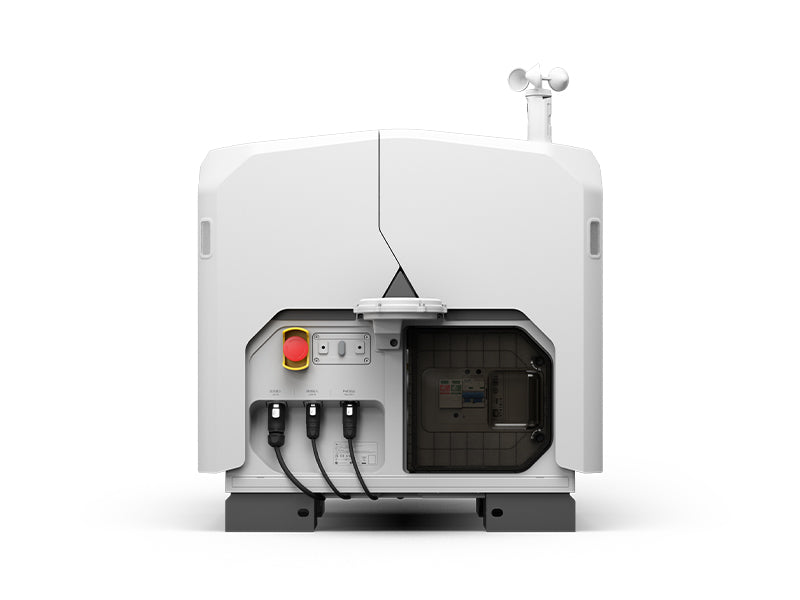
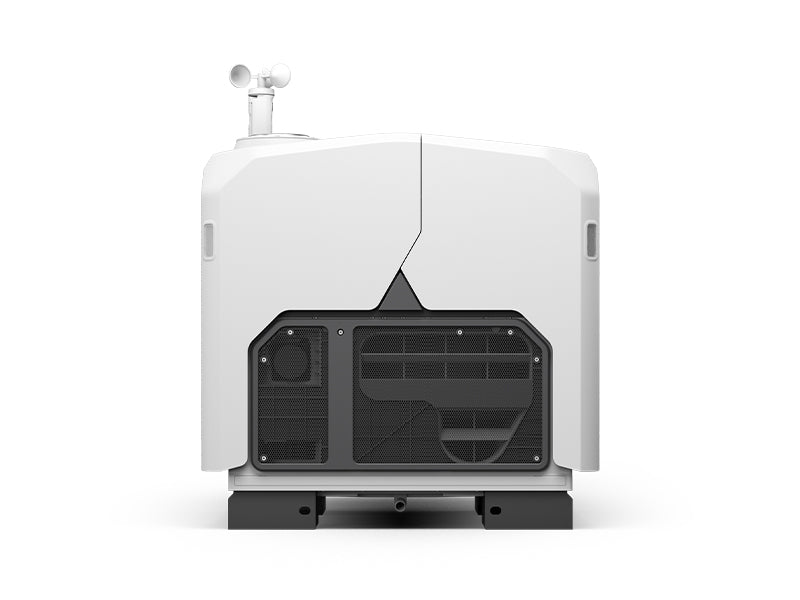
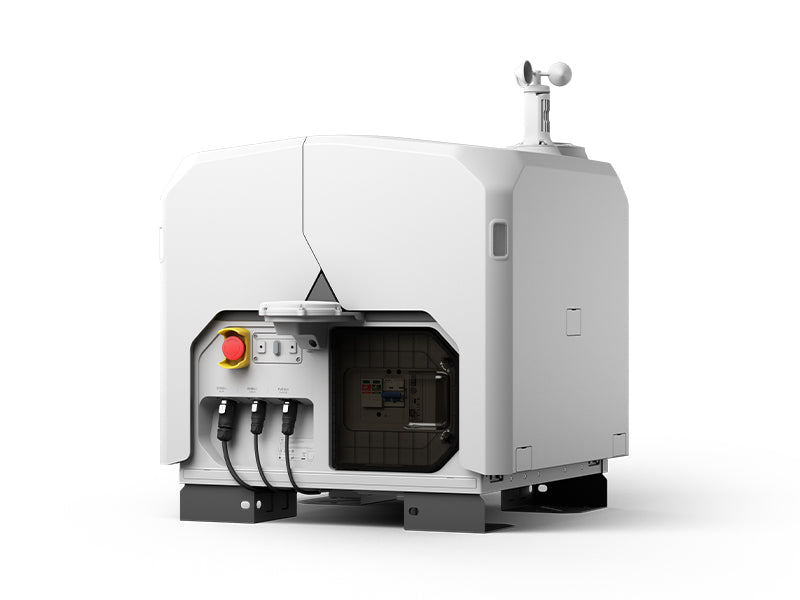
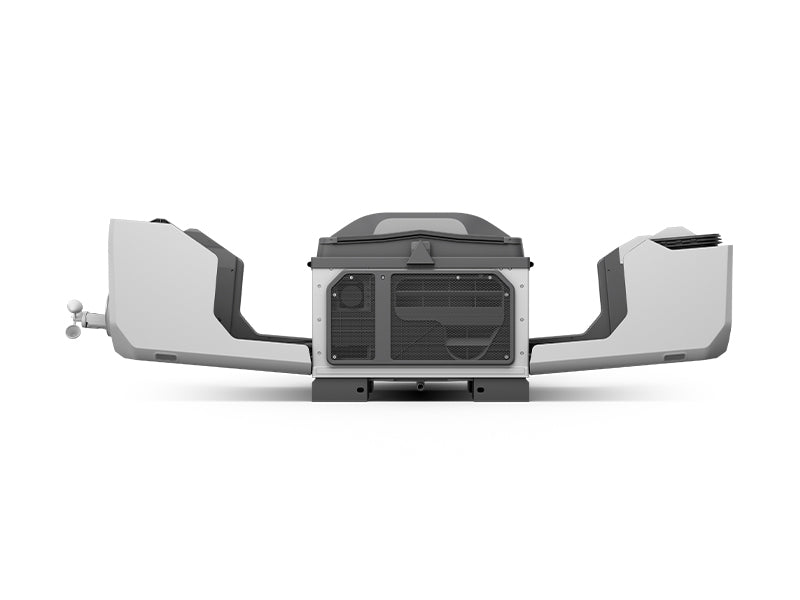
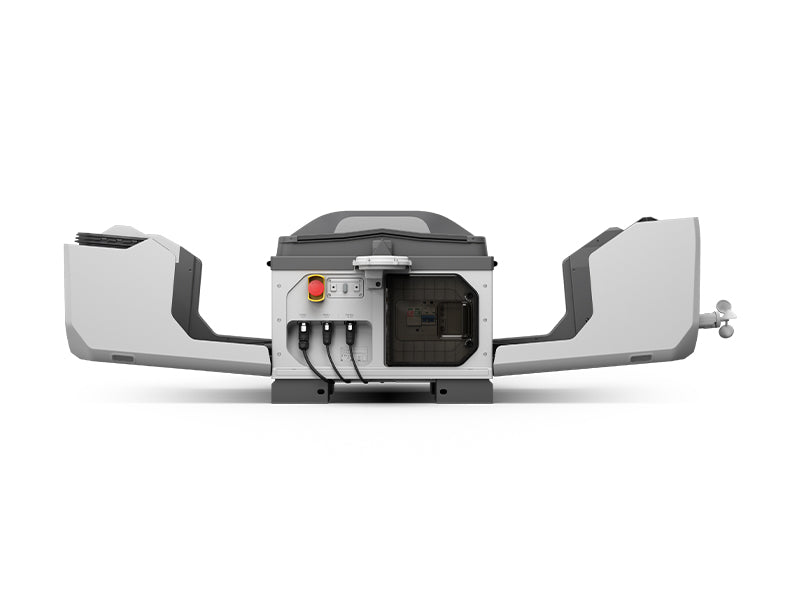
Equipped with Matrice 4D or Matrice 4TD high-performance drones, DJI Dock 3 empowers 24/7 remote operations and, for the first time, supports mobile vehicle-mounted deployment, effortlessly adapting to various environments. The drones utilize the same cameras as the Matrice 4 Series but offer improved flight and protection performance. They can also pair with DJI RC Plus 2 Enterprise for standalone use. With DJI FlightHub 2's intelligent features, pilots can significantly cut down on operational time and labor costs, maximizing efficiency and savings.
Adaptability
Heat Resistant
Built to withstand extreme heat, DJI Dock 3 operates and charges seamlessly even in temperatures soaring up to 50° C (122° F), ensuring efficient operations.
50° C Highest Operating Temperature
Cold Resistant
Perform critical tasks reliably despite frigid temperatures in environments where temperatures can plunge below -20°C (-4°F). After preheating, it can operate stably in harsh environments as low as -30° C (-22° F).
-30° C Lowest Operating Temperature
Wind Resistance
Both Matrice 4D and 4TD demonstrate remarkable flight performance. In winds as strong as 12 m/s, they can achieve stable takeoff and landing, and stay in the air for up to 32 minutes.
12m/s Max Wind Speed Resistance
Rugged and Dependable
Dock 3's design safeguards its internal systems from external conditions by encapsulating electronic components, allowing for seamless operations even in harsh environments.
IP56 DJI Dock 3 [2]
IP55 DJI Matrice 4D/4TD [2]
Low-Noise and Anti-Ice Propellers
Standard equipped with low-noise anti-ice propellers, the Matrice 4D and 4TD drones can maintain stable flight even in freezing rain. The silent design reduces noise during operations.
Deployments
Flexible Deployment, Ultra-Long Transmission
DJI Dock 3 can be flexibly deployed, redefining the paradigm of operations. For fixed deployments, signal quality can be enhanced by installing the next-gen D-RTK 3 Relay at elevated locations, allowing for flexible site selection of the dock. With the new DJI Enterprise app, deployment can be completed using just a smartphone. [3] Additionally, for the first time, a DJI Dock supports vehicle-mounted deployment, enabling more efficient dispatch during urgent operations and long-distance inspections.
Operational Flexibility
With operational flexibility at the forefront, Dock 3 can be stationed in a plethora of different locations, and with the all new DJI Enterprise smartphone app, missions can be conducted and completed in the palm of your hand.
Fixed-Mounted Deployment
The D-RTK 3 Relay Fixed Deployment Version enhances anti-interference for video transmission and satellite acquisition.
Installed at higher locations, it overcomes RTK and video signal obstructions, extending transmission range up to 25 km and enabling flexible Dock 3 site selection based on operational needs.
Mobile Vehicle-Mounted Deployment
DJI Dock 3 is the first to support vehicle mounted deployments.
Cloud Based Dock Location Calibration
During mobile operations, indoor personnel can use DJI FlightHub 2 to remotely set the dock's location and assign tasks on the cloud, thereby enhancing personnel and scheduling efficiency.
Safe Dual Dock Deployment
Two docks can be deployed on a single vehicle simultaneously, achieving a significant efficiency boost.
DJI Dock 3 employs a special take-over pattern to avoid drone-to-drone collisions and ensure operational safety, allowing the two docks to alternate tasks in an orderly manner.
Dual Drone Rotation
Automated hovering rotation of two drones enables continuous real-time aerial footage transmission. In emergency scenarios, a spotlight can be equipped to provide full-time illumination.
Specification
| Category | Spec | Value |
| Dock – General | Product Name | DJI Dock 3 |
| Total Weight | 55 kg (without aircraft) | |
| Dimensions (Cover Opened: L×W×H) | 1760 × 745 × 485 mm | |
| Dimensions (Cover Closed: L×W×H) | 640 × 745 × 770 mm | |
| Input Voltage | 100‑240 V (AC), 50/60 Hz | |
| Input Power | Max 800 W | |
| Operating Temperature | ‑30° to 50° C (‑22° to 122° F) | |
| Ingress Protection Rating | IP56 | |
| Number of Drones Accommodated | 1 | |
| Max Allowable Landing Wind Speed | 12 m/s | |
| Max Operating Altitude | 4500 m | |
| Receiving Frequency of RTK Base Station | GPS: L1 C/A, L2, L5; BeiDou: B1l, B2l, B3l, B2a, B2b, B1C; GLONASS: F1, F2; Galileo: E1, E5a, E5b, E6; QZSS: L1, L2, L5 | |
| Positioning Accuracy of RTK Base Station (Horizontal) | 1 cm + 1 ppm (RMS) | |
| Positioning Accuracy of RTK Base Station (Vertical) | 2 cm + 1 ppm (RMS) | |
| Dock – Charging Performance | Output Voltage | 35 V DC |
| Charging Time (15%→95% at 25°C) | 27 minutes | |
| Dock – Video Transmission | Operating Frequency | 2.400‑2.4835 GHz; 5.150‑5.250 GHz (CE: 5.170‑5.250 GHz); 5.725‑5.850 GHz |
| Antenna | Built‑in 9 antennas, 2T4R, supports intelligent switching | |
| Transmitter Power (EIRP) | 2.4 GHz: <33 dBm (FCC), <20 dBm (CE/SRRC/MIC); 5.2 GHz: <23 dBm (FCC/CE) etc. | |
| Dock – Air Conditioning System | Operating Voltage | 48 V DC |
| Type | Compressor‑based air conditioning | |
| Dock – Backup Battery | Battery Capacity | 12 Ah |
| Output Voltage | 12 V | |
| Battery Type | Lead‑acid battery | |
| Battery Life | >4 hours (but note: many functions disabled after power outage) | |
| Dock – Network Access | Ethernet Access | 10/100/1000 Mbps adaptive Ethernet port |
| 4G Access | Requires DJI Cellular Dongle 2 (sold separately, not available in all regions) | |
| Dock – Sensors | Wind Speed Sensor | Supported |
| Rainfall Sensor | Supported | |
| Ambient Temperature Sensor | Supported | |
| Water Immersion Sensor | Supported | |
| In‑Cabin Temperature Sensor | Supported | |
| In‑Cabin Humidity Sensor | Supported | |
| Dock – Security Camera (External) | Resolution | 1920 × 1080 |
| Field of View (FOV) | 151° | |
| Auxiliary Light | Auxiliary White Light | |
| Dock – Security Camera (Internal) | Resolution | 1920 × 1080 |
| FOV | 151° | |
| Auxiliary Light | Auxiliary White Light | |
| Dock – Lightning Protection | AC Power Port | 20 kA, meets EN 61643‑11 Type 2 & IEC 61643‑1 Class II |
| Ethernet Port | 10 kA (I_total), meets EN/IEC 61643‑21 Category C | |
| Dock – Supported Software | Applications | DJI Enterprise app (Android) |
| Cloud Platform | FlightHub 2; FlightHub 2 On‑Premises Version; FlightHub 2 FlightHub Sync; DJI Cloud API | |
| Dock – Expansion Capability | Edge Computing | Supports data communication with external switches |
| Aircraft – General | Weight | 1850 g (includes battery, propellers, microSD; excludes 3rd‑party payloads) |
| Max Takeoff Weight | 2090 g | |
| Dimensions (without propellers L×W×H) | 377.7 × 416.2 × 212.5 mm | |
| Diagonal Wheelbase | 498.5 mm | |
| Front Motor Left‑Right Wheelbase | 383.0 mm | |
| Rear Motor Left‑Right Wheelbase | 343.0 mm | |
| Front‑Rear Wheelbase | 341.6 mm | |
| Max Ascent Speed | 6 m/s (Normal Mode); 10 m/s (Sport Mode) | |
| Max Descent Speed | 6 m/s (Normal Mode); 8 m/s (Sport Mode) | |
| Max Horizontal Speed (sea level, no wind) | Normal: forward 15 m/s, backward 12 m/s, sideways 10 m/s; Sport: forward 21 m/s, backward 19 m/s, sideways 15 m/s | |
| Max Wind Speed Resistance | 12 m/s both during operation and takeoff/landing | |
| Max Takeoff Altitude | 6500 m | |
| Max Flight Time | 54 minutes | |
| Max Hovering Time | 47 minutes | |
| Max Operating Radius | 10 km | |
| Max Flight Distance | 43 km | |
| Max Pitch Angle | 25° (Normal Mode); 30° (Sport Mode) | |
| Max Angular Velocity | 200°/s | |
| Global Navigation Satellite System | GPS + BeiDou + Galileo + QZSS + GLONASS (QZSS & GLONASS only with RTK enabled) | |
| Hovering Accuracy Range (Vertical) | ±0.1 m (vision); ±0.5 m (GNSS); ±0.1 m (RTK) | |
| Hovering Accuracy Range (Horizontal) | ±0.3 m (vision); ±0.5 m (GNSS); ±0.1 m (RTK) | |
| Operating Temperature | ‑20° to 50° C (‑4° to 122° F) | |
| Ingress Protection Rating | IP55 | |
| Motor Model | 2611 | |
| Propeller Model | 1364F foldable low‑noise anti‑ice propellers | |
| RTK Module | Integrated on the aircraft | |
| Beacon | Integrated on the aircraft | |
| Aircraft – Cameras | Image Sensor | Matrice 4D: Wide‑Angle 4/3 CMOS (20 MP), Medium Tele 1/1.3‑inch (48 MP), Tele 1/1.5‑inch (48 MP); Matrice 4TD: etc. |
| Lens (Wide‑Angle) | Matrice 4D: 84° FOV, 24 mm equivalent, aperture f/2.8‑f/11, focus 1 m to ∞; Matrice 4TD: etc. | |
| Medium Tele Camera Lens | 35° FOV, 70 mm equivalent, aperture f/2.8, focus 3 m to ∞ | |
| Tele Camera Lens | 15° FOV, 168 mm equivalent, aperture f/2.8, focus 3 m to ∞ | |
| Lens Defogging | Supported on all cameras (wide, medium, tele) | |
| ISO Range | Normal: ISO 100‑25600; Night Scene: very higher ranges depending on camera | |
| Shutter Speed | Electronic and/or mechanical shutters; see spec details | |
| Max Image Size | 5280×3956; 8064×6048; 8192×6144 depending on camera/model | |
| Aircraft – Video Transmission | Video Codec | H.264, H.265; CBR/VBR |
| Resolution | 4K (3840×2160 @30fps), FHD (1920×1080 @30fps) | |
| Bitrate | H264: 60 Mbps; H265: 40 Mbps | |
| Aircraft – Storage | Memory Cards Supported | microSD U3/Class10/V30 or above; recommended cards listed |
| Aircraft – Battery | Capacity | 6768 mAh |
| Voltage | 22.14 V | |
| Max Charging Voltage | 25.5 V | |
| Cell Type | Li‑ion 6S | |
| Chemical System | LiNiMnCoO2 | |
| Energy | 149.9 Wh | |
| Weight | 640 g | |
| Cycle Count | 400 | |
| Charging Temperature | 5° to 45° C (41° to 113° F) | |
| Discharge Rate | 4C | |
| Max Charging Power | 1.8C | |
| Low‑Temperature Charging | Supports self‑heating charging | |
| Aircraft – Power Adapter | Input | 100‑240 V (AC), 50/60 Hz, 3 A |
| Output Power | 240 W | |
| Output | Total 240 W; USB‑C Port: 65 W max (if used alone; if two ports used, USB‑C constrained) | |
| Charging Hub | Input | 16.8 V to 25.5 V, 12.1 A |
| Rated Power | 240 W | |
| Charging Type | 3 batteries charging in sequence; Support Standard Mode (100% SOC) & Ready‑to‑Fly Mode (90% SOC) | |
| Compatible Battery | DJI Matrice 4D Series Battery | |
| Charging Temperature | 5° to 40° C (41° to 104° F) |






